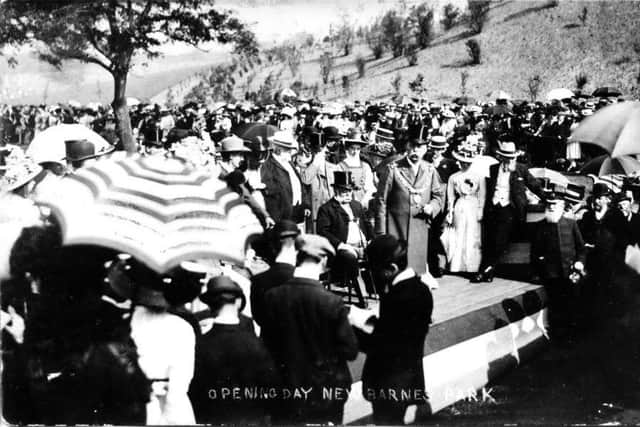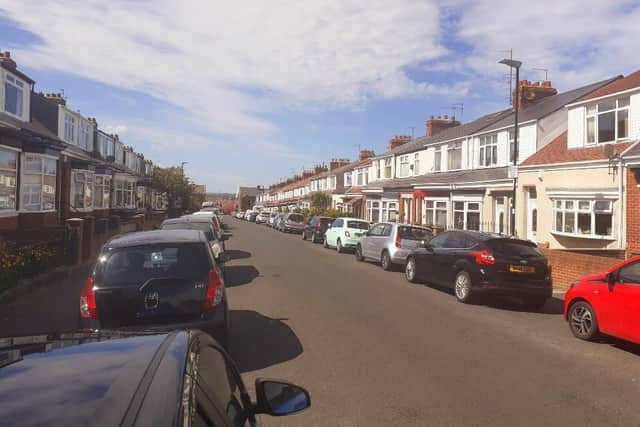Seven centuries of High (and Low) Barnes and where the name came from
and live on Freeview channel 276
They could be seen from miles around. I wrongly presumed that they were the high barns which gave the nearby area its name.
It was after I became a more adept speller when I took it as read that the Barnes area was named after some great family from a bygone era. While I was wrong on both counts, I was actually slightly nearer with my first uneducated guess.
Advertisement
Hide AdAdvertisement
Hide AdThe name of the area we know as Barnes dates back to at least the 14th Century.


According to a quite excellent article on the Youth Almighty Project: “The place name of Barnes was first recorded in 1351 when it is mentioned in unpublished special charters of the Dean and Chapter of Durham Cathedral.
“A further mention is made in 1458 when it is referred to as ‘Le Barnes’, once again in charters held by the Dean and Chapter.
“Its derivation appears simply to come from the old English word ‘Bern’ and to identify the site as the location of the barns belonging to the Manor of Hamlydon (Humbledon).”
Ownership


Advertisement
Hide AdAdvertisement
Hide AdAt various times over the centuries the land was owned by the Bishop of Durham, then by bigwig clans; the de Dalton family in the late 14th Century, then the Bowes family (of Bowes Museum and Queen Mother fame) in the 15th.
The area was split in two in 1668 High Barnes and Low Barnes. No one today will ever say they live in Low Barnes, just Barnes.
In 1673 High Barnes passed from the Bowes family to William Ettrick. He was originally from Dorset, but in 1661 became Collector of the Port in Sunderland.
In 1783 Low Barnes was bought by the hugely wealthy Pemberton family (formerly owners of the Ramside Hotel among other things), specifically Richard Pemberton who made it the seat of his family.


Low Barnes, the park and the Pembertons
Advertisement
Hide AdAdvertisement
Hide AdThe Pembertons retained Low Barnes until some point in the late 19th Century. Then it became Barnes Park, which opened in 1909.
A grand red brick mansion and home of the Pembertons, simply called The Barnes, was demolished in the 1920s to make for a bowling green, now home of the Pemberton Bowling Club (deadly rivals of the Barnes Bowling Club, whose greens are on the other side of the park).
The gate arch to the house survives, while the coach house is now the delightful Coach House Cafe.


Barnes Park was a long time coming and created following a 20-year campaign. Colonel Thomas Reed was chairman of the Parks Committee and a driving force behind it.
Advertisement
Hide AdAdvertisement
Hide AdThe site chosen was to follow Barnes Burn; otherwise Ford Estate might now have been Ford Park as land there provided a rival choice.
It was eventually agreed in 1904 to buy the land where the park now stands for £8,500. The land was owned by a Mr Punshon who had demanded £10,000. However, he made a classic negotiating error by dying.
The building of the park employed almost 3,000 people over five years and was almost named Reed Park. Colonel Reed was given the consolation prize of presiding over the official opening on August 6, 1909.
Barnes Park remains one of Sunderland’s open-air treasures, particularly after a £3.3 million regeneration in 2010. It has a bandstand, cafe, playing field, a play park, bowling greens and an abundance of wildlife.
Advertisement
Hide AdAdvertisement
Hide AdBut perhaps its most interesting feature is the English Civil War cannon beside the Ettrick Grove bowling greens.


A plaque stated it was: “Dredged from the River Wear near the spot where the Scottish Army of General Leslie crossed in February 1644.” Leslie was on Oliver Cromwell’s side in the war.
The Ettricks, the Little Sisters and the FA Cup
Back in High Barnes the Ettricks were still living in the family mansion overlooking their estate until around 1845. Some time afterwards the house was demolished to make way for a new “Home for the Aged”.
Work on what became the Little Sisters of the Poor, a large Catholic residential home run by nuns and containing a chapel, began in 1900.
Advertisement
Hide AdAdvertisement
Hide AdThe home, with its beautiful gardens, is still operating today as the Holy Cross Nursing Home on Ettrick Grove, providing accommodation for 51 people, although it has not been run by nuns since 2013.
The Little Sisters used to run a hugely popular annual garden fete, which raised funds each Spring Bank Holiday. A highlight was in 1973 when the FA Cup was displayed in the gardens, with fete visitors charged 50p to have their photographs taken with the trophy.
Later – Nazi bombs
The Barnes area today is a model of pleasant, British suburbia with delightful swathes of greenery.
Gang warfare is not a major issue on Killingworth Drive. The nearest to violence most people around today can remember is the occasional difference of opinion in the queue at the Ormonde Street post office.
Advertisement
Hide AdAdvertisement
Hide AdBut far worse happened in High Barnes in World War Two. It seems unlikely that the Luftwaffe had identified Colchester Terrace as a significant target, but they struck late on Sunday, March 14, 1943. Nearby Nora Street was hit in the same raid.
Colchester Terrace was struck again seven weeks later on May 1. What exactly did Hitler have against Colchester Terrace (surely Guisborough Street was of greater strategic importance)?
Also bombed were the Chester Road entrance to Bishopwearmouth Cemetery, Abingdon Street, Ormonde Street and the Westlands; although seemingly random bombing was carried out across Sunderland.
There’s been more going on in Low and High Barnes in the last 700 years than you probably realised.
